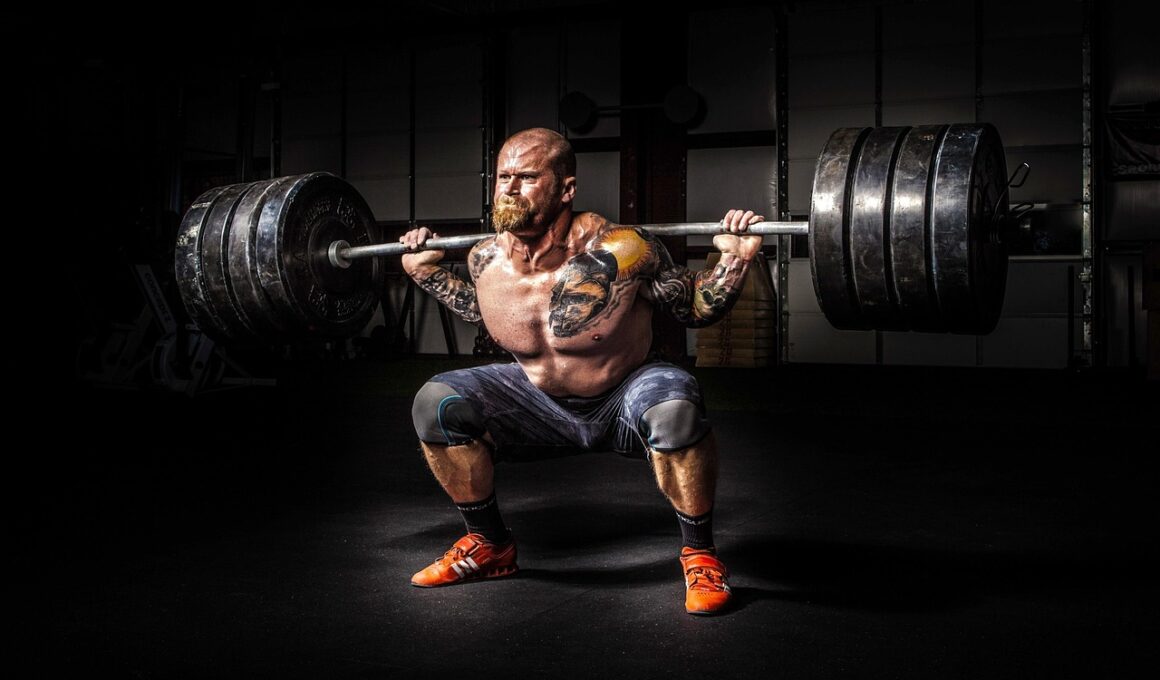How to Measure Your Wrist for Perfect Wrap Fit
Measuring your wrist accurately is crucial for selecting the right wrist wraps. First, gather necessary tools: a cloth measuring tape and a notepad. With the measuring tape, wrap it around your wrist at the point where your wrist is the smallest. This location is typically right above the wrist bone. Ensure that the measuring tape is snug but not overly tight; you should feel secure without discomfort. Next, read the measurement in inches or centimeters and jot it down. It’s essential to measure both wrists because they can differ significantly in size. If there’s a discrepancy, consider the larger measurement for purchasing wraps. Furthermore, consider the intended use of the wrist wraps. Lifting heavier weights may require a tighter fit. Conversely, for lighter lifts, a looser wrap may suffice. Remember to choose wraps that can accommodate fluctuations in wrist size due to swelling or cold weather. Depending on your training intensity, particularly in weightlifting, you’ll want to ensure that secured fits provide support without sacrificing blood circulation.
Wrist wraps serve a vital role in stabilizing the wrist during intense lifts. Besides measuring, selecting the right material is equally important. Wrist wraps come in different materials such as cotton, elastic, and synthetic blends. Cotton wraps generally provide comfort and breathability, making them ideal for beginners. On the other hand, elastic wraps offer greater support and are more suitable for serious lifters. You may also find wrist wraps with varying lengths, impacting how much support they offer during lifts. Shorter wraps tend to allow more wrist flexibility, while longer ones provide maximum stability. Similarly, the width of your wrist wraps affects their function. Typically, wider wraps are better at compressing the wrist joint, adding to their support capability. Pay attention to the closure mechanism as well. Velcro closures offer convenience and quick adjustments during workouts. However, some lifters prefer wraps with a thumb loop for added security. When selecting wraps, combine comfortable fit, material, and closure type to achieve the best lifting experience. Lastly, don’t forget to breakdown your lift’s requirements to help determine the perfect fit.
Choosing the Right Width and Length of Wrist Wraps
Before making a final decision on wrist wraps, determining their length and width that suits your lifting style is crucial. The length of wrist wraps typically ranges from 12 inches to 36 inches. Lighter lifters often benefit from shorter wraps, while more advanced lifters who lift heavier weights may need longer wraps for additional support. Width is just as critical; wider wraps can distribute pressure more evenly across the wrist and provide greater stability. To find your ideal wrap configuration, consider testing out various sizes in the gym. It is essential to experiment during training sessions instead of during competitions when support needs to be optimal. An essential tip is to consult with coaches or experienced lifters. They can recommend specific brands and configurations based on your lifting technique. In addition, individuals with past wrist injuries might require specialized wraps incorporating extra padding or wrist support. While some materials are customizable in terms of length or width, prioritize the specific demands of your lifting regime to ensure optimal performance and injury prevention.
After gathering accurate wrist measurements and determining the right width and length, the next step involves testing different wrist wraps. Selecting a variety of brands will provide insights into what fits your unique wrist shape best. Some athletes prefer wraps that are stiffer and provide more rigidity, while others may opt for flexibility to allow for more natural movement. Striking the right balance between support and flexibility is essential for effective weightlifting. While shopping, keep in mind that not all commercial wraps offer the same quality and performance, so testing them will yield the best results. Try considering different material compositions, such as blends featuring latex or neoprene, which can enhance the effectiveness. Pay close attention to how each wrap feels during lifts: if it restricts blood flow or causes discomfort, they may not be the best option. Moreover, consider giving wraps with assorted grip textures a trial run; they might offer better traction when lifting heavy weights. Lastly, remember that wrist wraps should empower your performance and provide the necessary support without overly hindering your motion.
Maintaining Your Wrist Wraps
Once you’ve acquired the perfect wrist wraps, maintaining them becomes vital for ensuring longevity and durability. Begin with proper washing techniques, as many wraps can lose their elasticity if mishandled. Always opt for hand washing with mild detergent, avoiding harsh chemicals that can degrade the fabric. After washing, be sure to let your wraps air dry; heat from a dryer can warp the materials. Store your wraps properly too, in a dry and cool place, to avoid mold or odors. Regularly inspecting your wraps for signs of wear will help you catch any damaging issues before they worsen. Should you detect uneven fraying or looseness, it’s advisable to replace them promptly to avoid risking your wrist safety. Additionally, using a protective cover during gym sessions can prevent dirt accumulation and wear, extending the life of the wraps. Invest in quality wraps from reputable brands; this often means improved durability, enhancing your weightlifting experience while minimizing injury concerns. Over time, a well-cared-for set of wraps will translate into better lifts and enhanced wrist support.
Lastly, understanding how to apply wrist wraps correctly is just as significant as selecting the right pair. Applying wraps can vary based on personal preference but the general method remains consistent. Start by ensuring the wrap is positioned correctly with the Velcro side facing inward. By doing this, you can easily secure the strap once wrapped. Begin wrapping from the base of your palm and proceed toward your wrist, overlapping each layer slightly for added support. Pay attention to the tension and tightness; you should achieve a firm grip without compromising blood flow. Too loose and support is minimized, too tight and circulation may be restricted which could lead to numbness. Once the wrap is adequately secured around the wrist, use the Velcro fastener to lock it in place. If you prefer, a thumb loop can be utilized here to enhance stability. After completing this process, take a moment to check your range of motion; adjust accordingly if necessary. Properly applied wraps enable improved wrist stability, allowing you to focus on heavier lifting and accomplish your fitness goals effortlessly.
The Role of Wrist Wraps in Injury Prevention
Wrist wraps play an essential role in injury prevention, which is a fundamental aspect of any rigorous weightlifting regimen. By providing additional support and stabilization during lifts, wrist wraps help diminish the chances of unexpected injuries. This protective gear is particularly beneficial for individuals who are lifting heavy weights or performing repetitive movements that place significant strain on the wrist joints. Additionally, wrist wraps can aid in alleviating discomfort and tension, especially for those who may have pre-existing conditions. They offer compression that maintains blood flow, reducing the impact of vibrations felt through the wrist area when lifting heavy. Tailoring the fit of your wraps can lead to maximum protection; ensuring optimal sizing can prevent injury during training sessions. Furthermore, consider consulting physiotherapists or trainers who specialize in strength training techniques. They can provide personalized recommendations based on your lifting style and wrist health. By emphasizing the need for supportive equipment like wrist wraps, you’ll foster a more robust lifting routine that minimizes the risk of injury and promotes overall physical wellness.
In summary, achieving the perfect wrist wrap fit revolves around precise measuring, appropriate selection, maintenance, application, and injury prevention. Begin by measuring your wrist accurately and consider the variable sizes during selection. Opt for quality materials based on your experience level and lifting intensity. Remember that proper maintenance will enhance the wraps’ durability significantly. Once wraps are in hand, practice wrapping techniques to ensure the best fit. Additionally, prioritize injury prevention by utilizing wraps that provide the necessary support but allow for some wrist flexibility. Ultimately, wrist wraps are essential tools for maximized performance while lifting, ensuring you progress toward your fitness objectives with minimal setbacks. By following these guidelines, you’re empowered to make informed decisions on wrist wraps that will enhance not just your lifting prowess but also your overall experience in the gym environment. Lastly, don’t hesitate to explore various products on the market; wrist wraps can come in numerous styles and designs to match your preferences and performance needs.


